Fishing for Grayling: The anglers guide
The beautiful, fascinating grayling is a highly sought after fish for many anglers. Dom Garnett talks us through how to catch the “Lady of the Stream” – a species that spans the boundary between coarse and game fish.
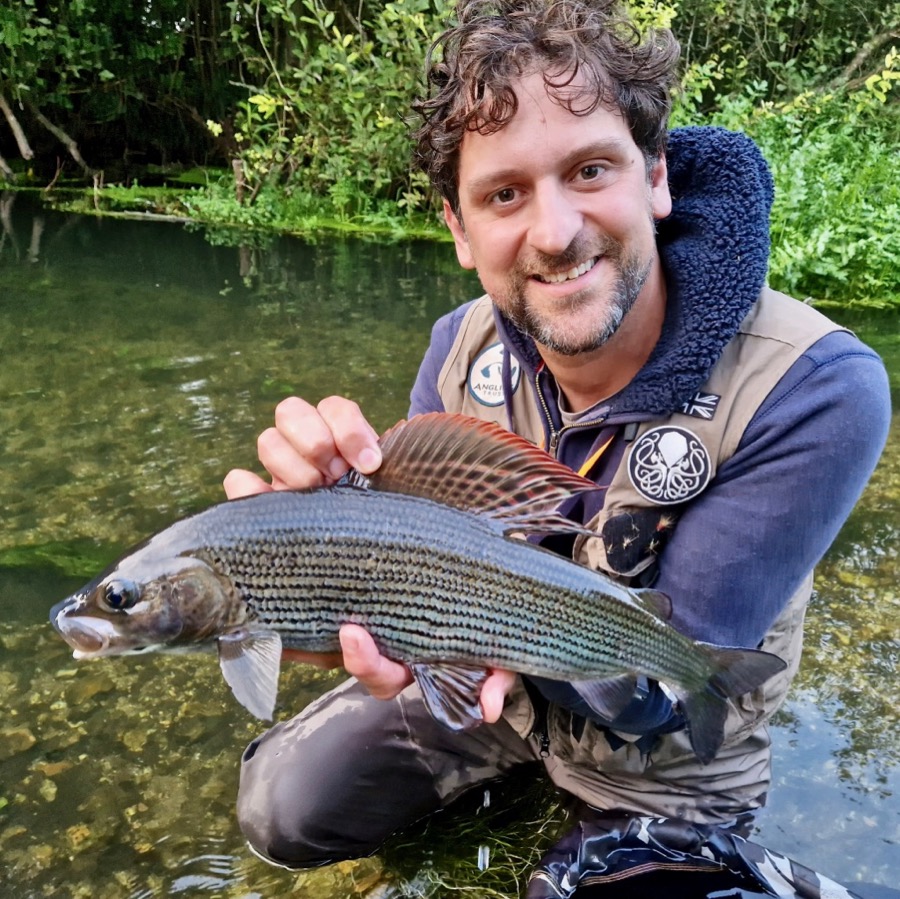
There is no other British fish quite like the grayling!
Identification and habits
A distinctive and very ancient fish, the European grayling (Thymallus thymallus) has a striking beauty unlike any other species. With dark lined, greyish-silver sides, its most recognisable feature is an exaggerated, sail-like dorsal fin, which is an incredible, dappled, deep purple colour.
It’s hardly surprising that such a remarkable looking fish has spawned different names and legends. The “Lady of the Stream” moniker is common to this day, although in older English and French this fish was also rather enchantingly called the Umber – from the Latin word for shadow, owing to their ghostly ability to blend into the stream bed.
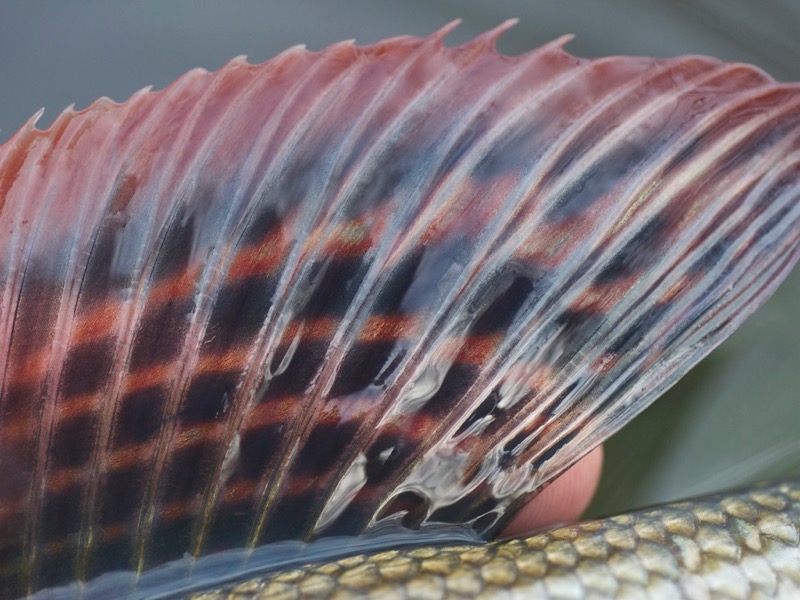
What a fin! The grayling’s dorsal is huge, with males having the biggest of all.
Sleak and perfectly adapted to swift flowing water, grayling are a delicate and short-lived fish. They eat much the same diet as trout, from various aquatic larvae to midges, caddis and mayflies. However, while they sometimes rise for food, grayling have a more downward slung mouth that seems to render them especially well suited to feeding among stones and bottom debris, and they thrive especially well on rivers rich in freshwater shrimp. Perhaps for this reason, they are also highly susceptible to weighted flies, or baits presented close to the bottom.
Grayling will eat quite a wide range of prey – and this perhaps has something to do with the fact they are a short – lived fish with high metabolism and fast growth. Unlike species such as trout or chub, they seldom live beyond six or seven years. However, even on quite modest rivers, they often make a good weight. A one-pound grayling is a good fish, with a two-pounder regarded as a “specimen” and a “three” the fish of a lifetime on most rivers.
Handle with care!
Regardless of where we find grayling, one absolutely essential aspect is handling these fish with huge repect. They are quite fragile, especially once brought to the net – and do not tolerate much handling. For this reason, the wetter you can keep them, the better. Many anglers now favour photographing them in a submerged net, or if you must have a “grip and grin” shot, this should be done as quickly as possible, preferably over the water and with wet hands. Waders and a soft mesh net make fish care easier, while barbless hooks are also recommended.
Grayling should be held upright, nose first into the current on release until they “get their breath back”. This can take a little while if a fish has fought hard- and it’s also sensible to release them away from heavy flows where they could be swept away while recovering. Under no circumstances should grayling ever be put in a keepnet!
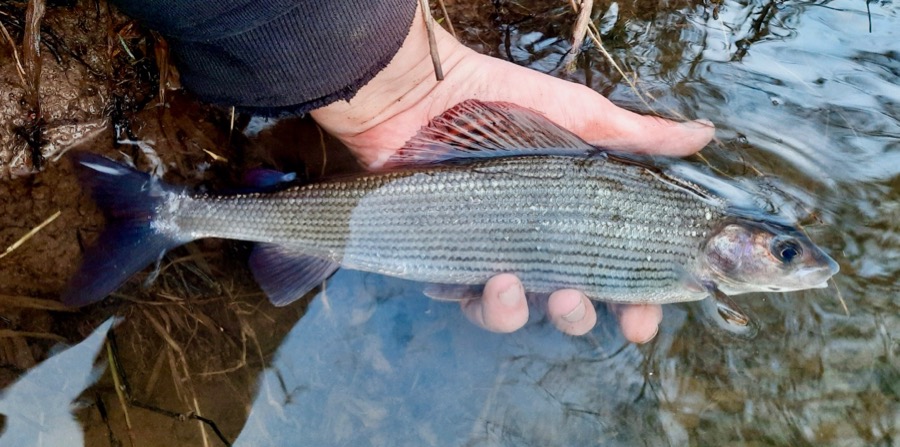
A grayling is gently held in the current to recover on release.
When is the grayling season? When do they spawn? Do I need a special licence?
Although thought of as “game” fish these days, grayling spawn at a time closer to coarse fish such as dace and chub, (typically in April or May in the UK). They do so over gravels, and that luxurious looking fin seems to have a function in this as the males actually drape this over their partners!
The fishing season in England and Wales follows the coarse season (16 June to 15 March) to protect the fish when spawning. Do be ultra careful at these times – avoid disturbing spawning areas, even where you are permitted to fish for trout, and ensure any accidental catches are released immediately with minimal handling!
The best time to fish for grayling is debatable. For dry fly sport and sight fishing, high summer is the ultimate thrill. However, they are a species that will still feed right through the winter, even when there is frost on the ground. Hence the best time to catch them is often when you get a chance! However, the time to avoid is any period when heavy rains colour up the river, since they are primarily sight feeders.
As for licences and permissions, the rules are the same as with other fishing. Your general rod licence is a must in England and Wales – but Scotland requires no licence. Wherever you fish, you must have permission from an angling club or landowner, so do always check. Many waters also only allow fly fishing, although quite a few permit bait fishing in the winter months. Again, always do your homework because “I didn’t know” won’t save you from hot water!
Where do you find grayling? Venues and typical spots and habitats
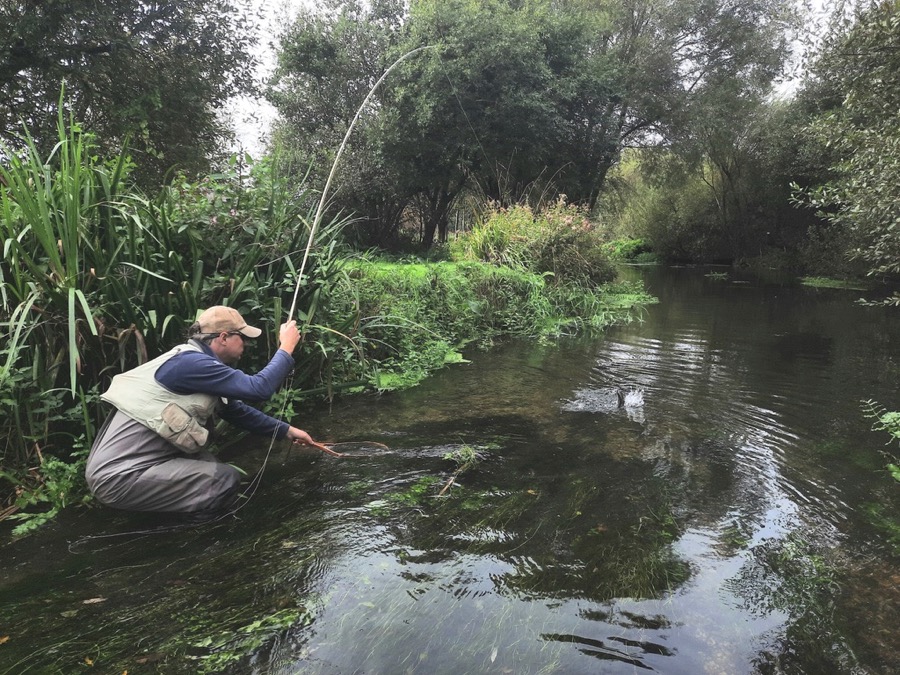
A clean, clear, fast flowing river- classic grayling habitat.
Although occasionally found in slower rivers and even some European lakes, the grayling is a fish most at home in the streamy, clean and clear running waters also favoured by trout. Once limited in range, the species has been introduced a lot more widely into British rivers in modern times – including new populations from Cornwall to Scotland. Among the best grayling rivers in Britain are the Irfon, Dee and Wye in Wales, the Dove, Wharfe, Test and Dorset Frome in England and the Tweed and Teviot in Southern Scotland.
As for spots on any given river or stream, grayling are a fish that need good oxygen levels and hence favour steady current. One common mistake new or unfamiliar anglers make is to focus on still or slow moving bits of water, when these fish clearly prefer movement. While they don’t typically tolerate water quite as fast as trout, they love steady “walking pace” sections. The depth is not always the critical factor- and while they commonly like steady flowing areas of two to five feet deep, you may find them in as little as a foot of gravelly, swift water in the summer.
They are not always easy to spot – and a pair of polarising glasses is a must! Quite often you will only see them when they move to intercept food or shift position. Unlike trout, they appear quite sociable and are often found in small groups. They appear more tolerant of human presence than trout, too, and you can quite often get close to a fish if you wade slowly. Sometimes, they even appear to follow the disturbance of a wading angler- and in fly fishing tournaments this has even led to sneaky anglers stirring up he water by design- a dark art known as the “grayling shuffle”!
How to catch grayling – basic methods
Fly fishing for Grayling
The two most common ways to fish for grayling are fly fishing or trotting with bait. Both can be successful – but don’t assume bait is always best! Many is the time when the biggest grayling have succumbed to the fly and the current British record (4lbs 8oz) was caught not with maggots, but using an artificial nymph.
Fly fishing for grayling has broad similarities with trout. Since fish almost always sit facing into the flow, casting upstream and approaching from their blind side makes sense. While they are not as “spooky” as trout, you should still be cautious and wade with great care, taking your time so as not to alert them.
Typically, long rods of 10ft are favoured, in weight classes from two to four. That said, smaller streams and tributaries often suit a little “wand” of no more than eight feet.
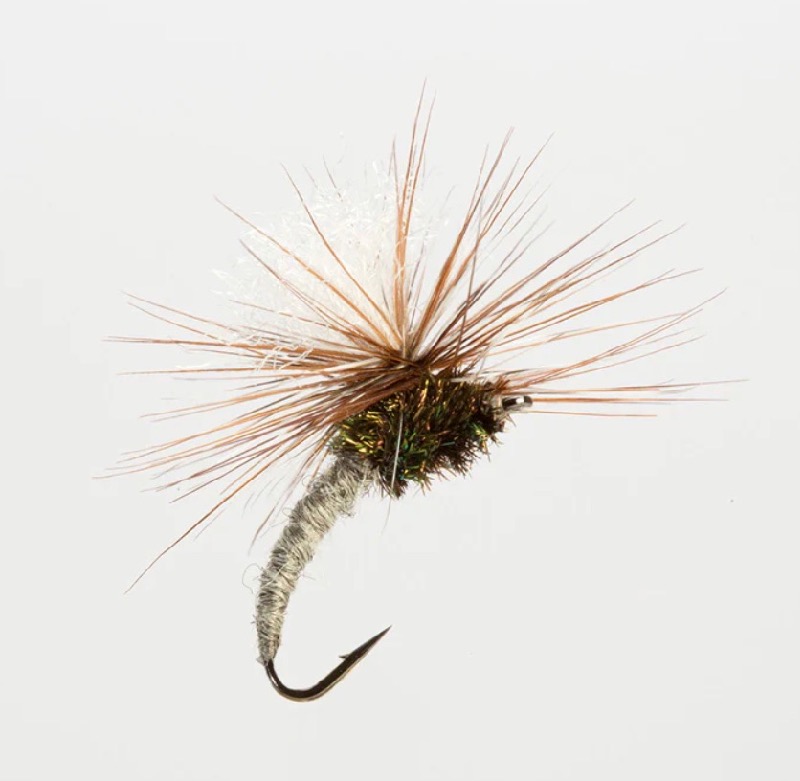
Perhaps the most enjoyable way of all to catch grayling is on the dry fly. This can work excellently from June through to September- and the most famous and successful fly of all time for this is surely the Klinkhamer (above). That said, traditionals like a Red Tag or Black Gnat also have their day- and the list of successful patterns is vast. Don’t be surprised if the fish are rather fussy in smooth water- casting gently and going down to tippets of just 3lb or so can be sensible.
For the most part, though, most fish and the bigger grayling are caught on sinking flies such as bead headed patterns, Czech Nymphs and various specially designed grayling bugs. These can look very natural – or totally unnatural, since the species also seems drawn to vivid colours, including bright pink or even yellow!
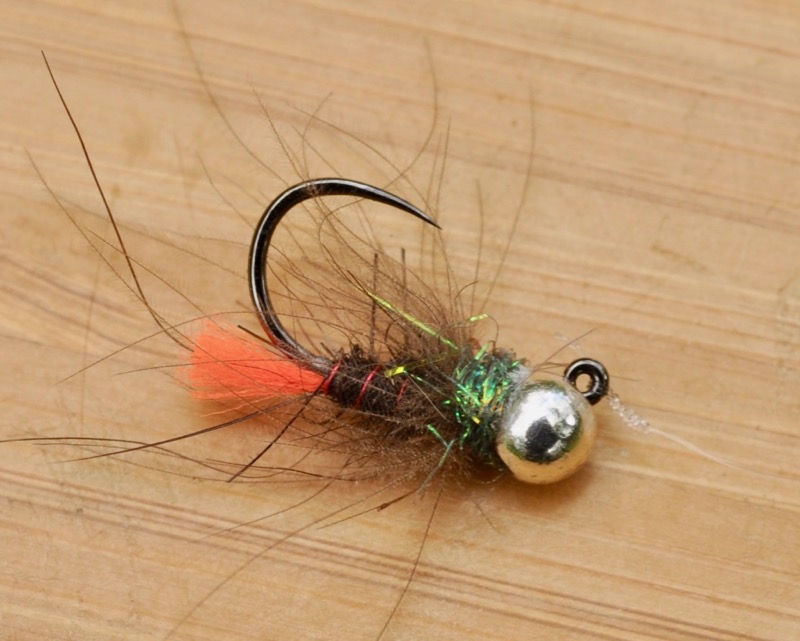
A typical grayling bug- the species likes a dash of colour!
The easiest way to present a wet fly in shallow to waist height water is to use a small floating indicator- or to go “New Zealand Style”, which simply means tying your nymph to a length of tippet secured directly to the bend of a buoyant dry fly.
For the real specialists, however, so-called “Euro Nymphing” is often the chosen method. This involves using a long rod and long leader, with virtually no fly line out at all. A team of two or even three flies are cast forward into the current, while the rod is held high to “track” the nymphs along in the current. The angler feels carefully for any little pluck or check that could signal a fish. This method is especially deadly in fast or slightly deeper water- and while it might look strange to the unconverted, it has accounted for huge grayling all over Europe.
Bait fishing and trotting for grayling
While fly fishing has the elegant reputation, bait anglers needn’t feel in any way inferior seeking grayling. Long trotting (allowing your bait run down with the current under a float) with a fine rod and centrepin reel is a skilful and delightful way to catch these fish.
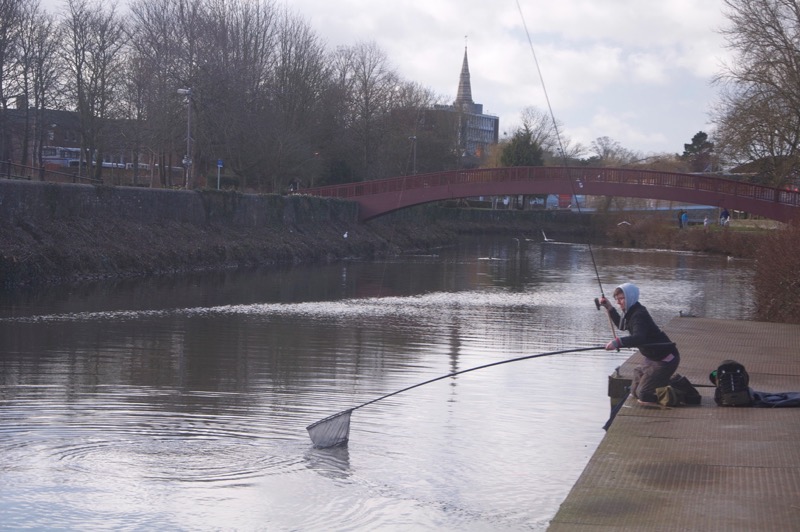
An urban angler trots for winter grayling. The species does surprisingly well in towns and cities.
Typical gear consists of a float rod of at least 12 feet- and sometimes as much as 15 on larger rivers. Fixed spool reels are easier to use for most anglers, but little beats a centrepin for smooth trotting. Waders are often as important here as they are for fly anglers- in part because they let you get closer to your quarry and able to maintain better presentation, getting a straight line down to the fish rather than an angle whereby the float and bait keep getting dragged sideways in the current.
In common with fly fishing, the aim is to let your offering travel naturally with the current of the river- it’s just that bait fishers go with the flow (or “downstream”) rather than casting into it.
Maggots are considered the best grayling bait- and can be fed in small quantities to get the fish feeding before you introduce a baited float rig. Grayling are highly susceptible to this approach- and love the dyed baits as much as the naturals.
Your float itself should match the river and current you face. A tiny, shallow stream might need only a small float, while a heady current and shoulder deep water would require a much heavier model to take sufficient shot to send your bait near the bottom. While the idea is a natural presentation, the angler will often slow the float down to allow the bait to reach the fish first, wafting up tantalisingly with each careful check on the line.
You will generally know quickly if hungry grayling are present- so keep moving if you’re not catching! If it is bitterly cold you might need to slow the bait right down and trip it tight to the deck- or even dig out a feeder rod. Speaking of which, the swimfeeder is another great way to catch grayling- while small worms, bread or sweetcorn also among the best grayling baits.
One word of warning for bait fishers, though, and especially the quiver tip angler, is to strike bites early. Grayling are fragile fish, after all, and a deep – hooked one may not survive, so don’t wait for them to pull the rod in! A short hook length helps magnify bites, which should be hit right away!
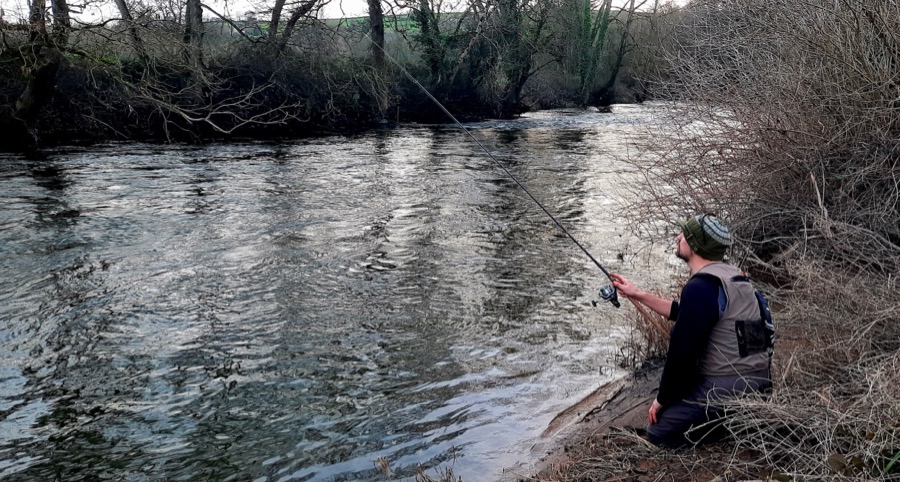
An icy river- but still every chance of grayling!
Lure fishing
While still not exactly commonplace, it’s also worth mentioning that modern lure fishing techniques have a place in grayling fishing. This really isn’t so crazy when you consider that the species will happily eat minnows and fry at certain times in the season- not to mention devouring worms, leeches and other goodies we can replicate with lures.
Tiny jigs are probably the most reliable method going- with grubs or creature baits as small as possible, typically no more than an inch. Or you could try drop shotting a soft plastic worm or something similar on a tiny hook. This is well worth a go in cold conditions, when grayling might be unwilling to move far to grab lunch.
In Europe, anglers have even had some success using tiny spinners- either as they come or even tipped with a piece of worm. We’re not going to knock it, because wherever rules permit it could bring some great sport. At present, writing on the subject is rather limited- although this blog from LureBug gives an interesting perspective: read more here.
Twisting and turning! – How to play and handle grayling
One peculiarity of grayling is the way they turn in the current and generally misbehave when hooked! It’s for good reason gamekeepers on the chalk streams nickname them “twisters”! On the end of your line, they can weave and ping off quite easily, hence some float fishers even incorporate a swivel between their mainline and hook length.
Meanwhile, a large grayling can put that huge sail fin up to stubborn effect and really catch the current. For this reason, you should play fish with care. Where possible, keep the fish out of the strongest currents – you might need to move your feet to get downstream or into a better position to net a big one!
We’ve already stated the species are fragile – and allied to this they are one of the worst behaved fish for a picture, slipping and twisting all over the place. For this reason, a wet “in the net” shot is much kinder than “grip and grin” so don’t feel obliged to get that trophy picture.
Fish welfare has to come first – and a close up in a landing net often brings out an even better picture, really filling the frame with those amazing details and colours. Another increasing trend for many anglers is to measure fish rather than weighing them – as this results in a lot less faff, handling and time out of water.
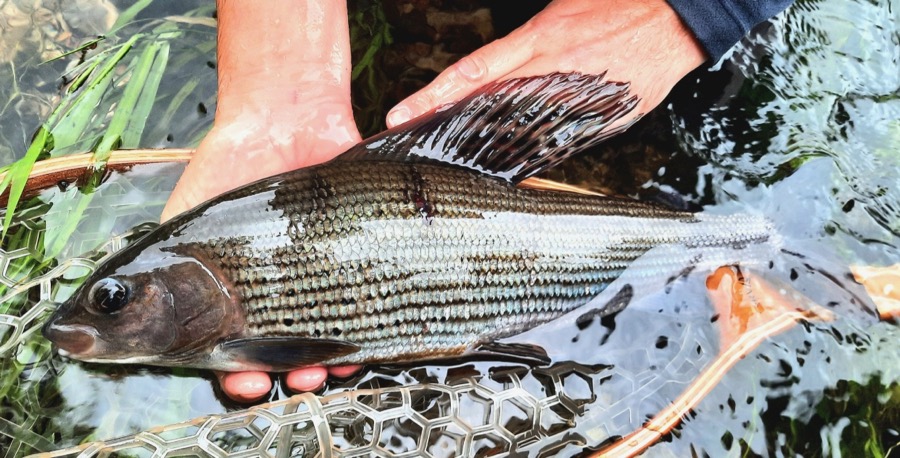
Specimen grayling need extra care- and a fish photographed in the water is far less likely to be dropped or damaged.
Further reading useful links
There is so much more to learn about the grayling, but I hope this article has provided some useful basics and got your brain ticking over. There is no other fish quite like them – and they are worth tracking down wherever you get the chance. Several further sites and books are also worth a quick mention on this basis.
First stop for in depth information, conservation work and some excellent tips on handling as well as catching grayling is The Grayling Society: https://www.graylingsociety.net/
As for finding fishing venues, one issue for many parts of the UK is finding access to grayling in the first place. One of the best ways to get day ticket fishing is via angling passport schemes – and the following come highly recommended: FishPass has various grayling rivers from Cornwall to Exmoor and other right South West spots: https://fishpassapp.co.uk/
The Wye and Usk Foundation and its Fishing Passport scheme has excellent grayling fishing across Wales and England: www.fishingpassport.co.uk
Or you could always come and join me for a day on the River Exe – where I have day ticket access to some excellent fishing: https://dgfishing.co.uk/home/exe-fly-fishing/
Books on grayling
For those looking to delve deeper into techniques and watercraft, a few books exist on the topic. These include Ronald Broughton’s Complete Book of the Grayling and Grayling on the Fly by John Roberts.
Catch more from Dom Garnett
Dom is a fishing guide and author based in South West England. Check out his website dgfishing.co.uk for his lure and fly fishing guiding services , books, flies and regular blog. You can also read him every week in the Angling Times, follow him on Instagram (@domgarnett_fishing) and see various angling films on his YouTube channel: https://www.youtube.com/@domgarnettfishing
Similar articles
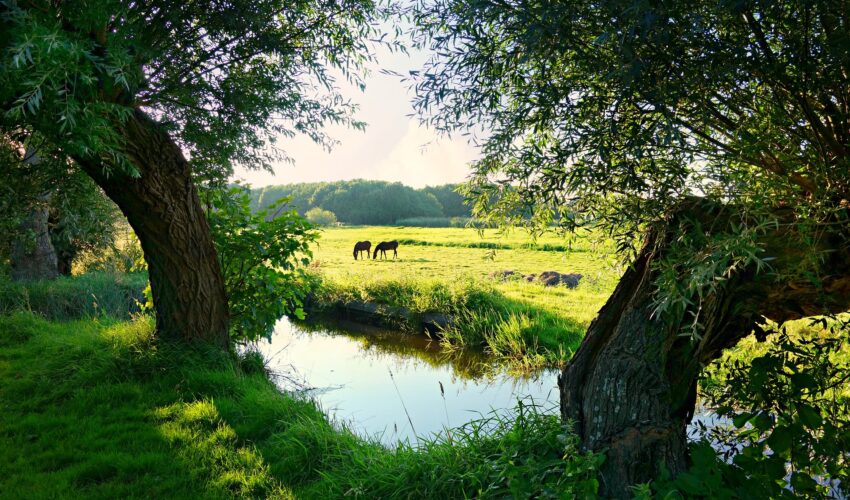
River Fishing – A guide to getting started
Are you thinking of going for a trip to the river in 2025 but find yourself filled with trepidation because you have never fished running water before? Well I want you to relax. Let us take the mysteries out of…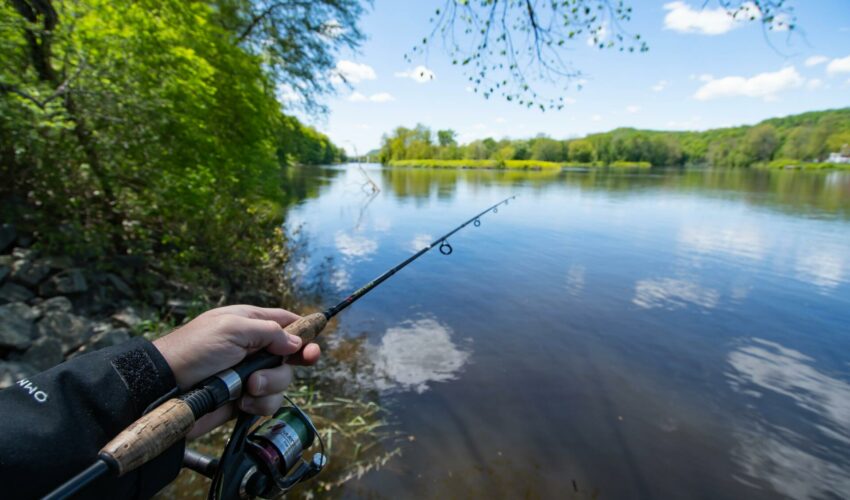
A guide to fishing licences in 2025
Whether you want to become a new angler or you’ve been fishing for years, you will be required to obtain the Environment Agency Rod Licence. In this article we explain what you’ll need if you want to go fishing in…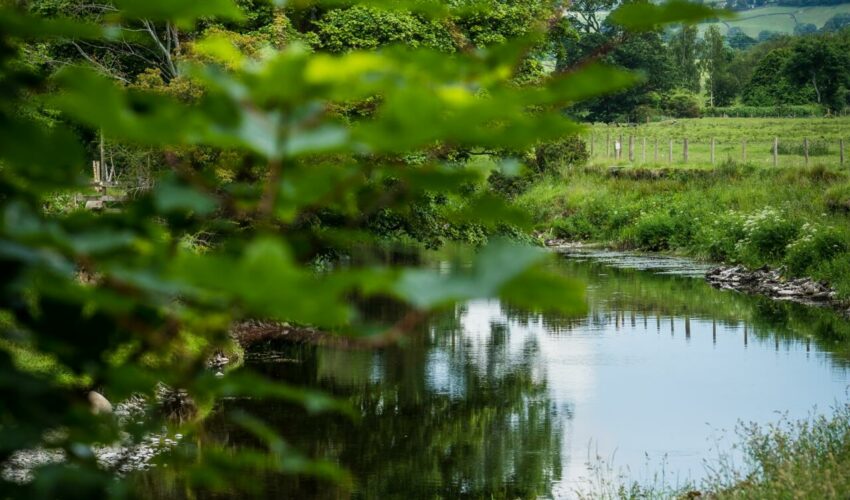
Make the most of the 2025 river season with this in-depth guide to fishing rivers
If you’re new to fishing rivers, or just fancy a change from fishing stillwaters, this guide will help you make the most of the new 2025 river fishing season. With advice on reading the water, what species to fish for…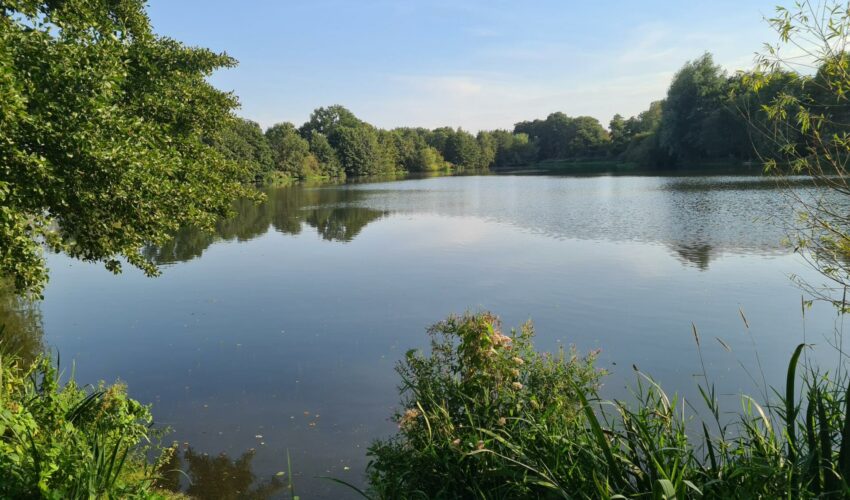
Our guide to fishing this spring (2025)
With the worst of the weather over (we hope!) and with spring finally here, it’s time to clean out that tackle box and get on the bank for some spring time fishing.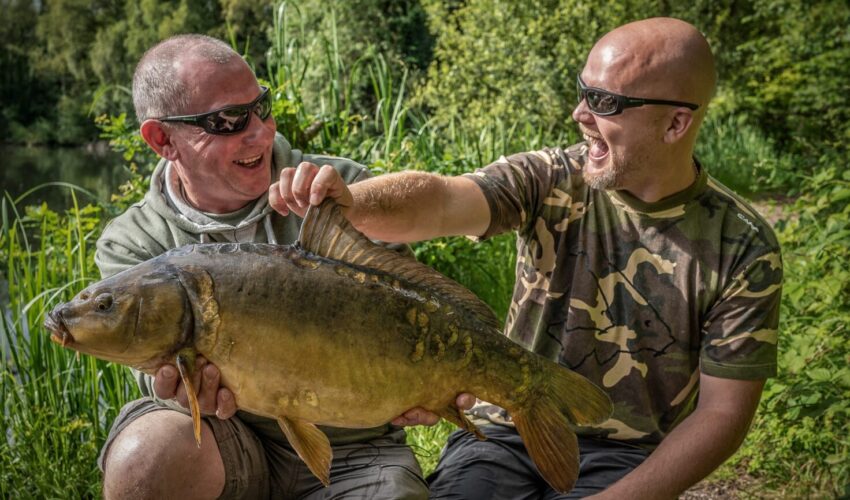
Take a friend fishing
Get ready to hit the water! From April 18th to May 4th, 2025, you can get a free fishing license to take a buddy out and show them what fishing’s all about. Yep, free! It’s all part of the “Take…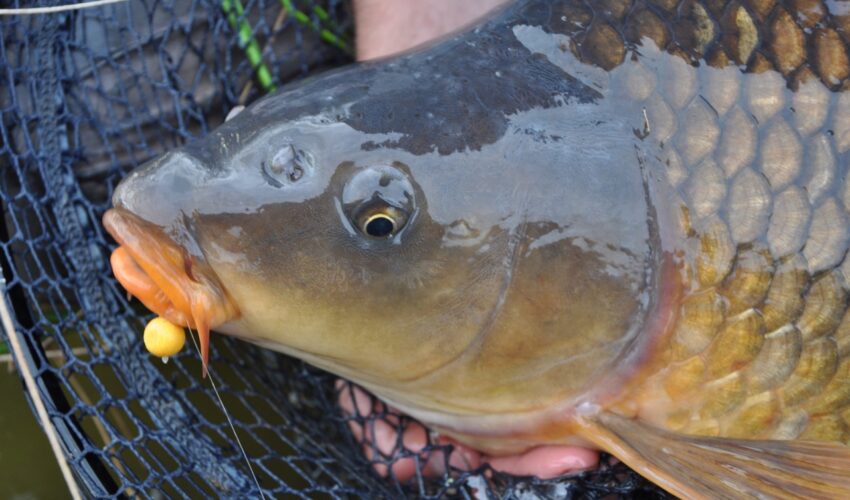
Fishing tips for hard days: How to get more bites
It happens to the best of anglers. Whether conditions are tough, the fish are moody, or our plans simply aren’t working, there are days we struggle. But what can you do to catch fish that seem unwilling to cooperate? There’s…Search by Region or County
Find new places to go fishing in your local area or county by choosing your destination below








Comments